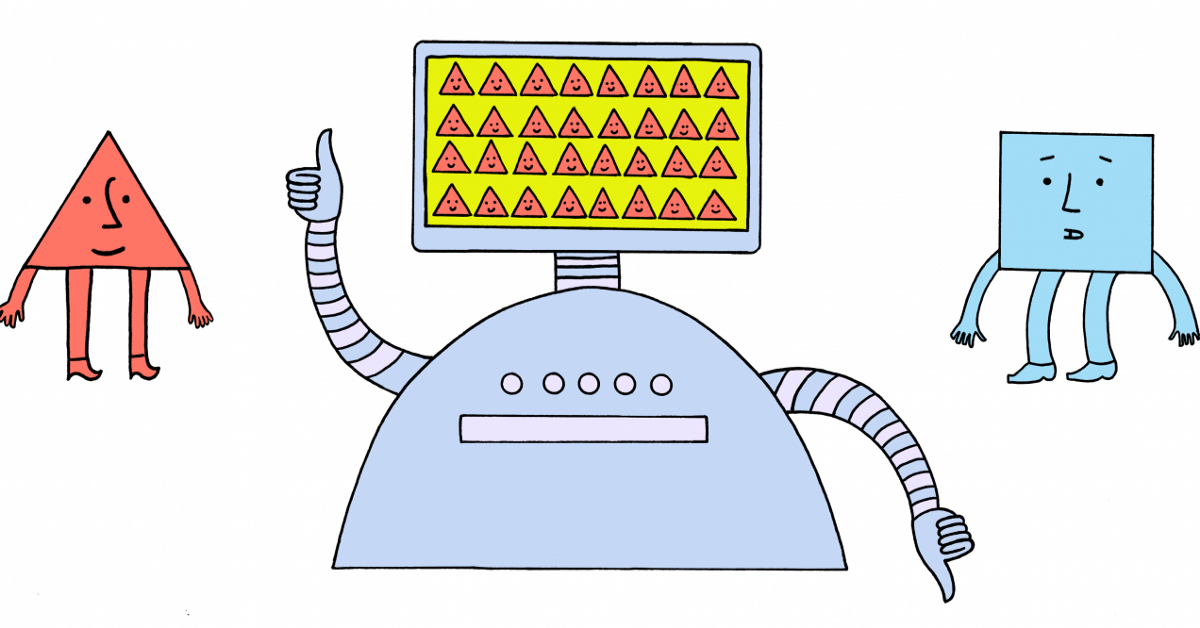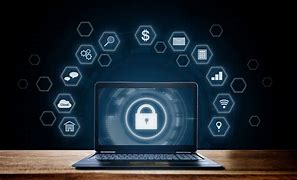

Computing Innovation
Computing innovation has been a major driver of technological progress and has greatly impacted our daily lives. However, like any other technological advancement, computing innovation can be both beneficial and harmful, depending on how it is used. Additionally, computing innovation can have unintended consequences and impacts that go beyond its original purpose. In this response, we will explore the positive and negative effects of computing innovation and its potential impact beyond its intended purpose. There are many benefits of computing innovation. Increased productivity: Computing innovation has made it possible to perform tasks faster and more accurately, leading to increased productivity in many industries. Improved communication: Computing innovation has enabled people to communicate more efficiently and effectively, allowing for faster and more accurate exchange of information. Enhanced convenience: Computing innovation has made it possible to access a wide range of services and products from anywhere, at any time. Advancements in healthcare: Computing innovation has revolutionized healthcare, leading to improved diagnosis, treatment, and patient care. Environmental benefits: Computing innovation can be used to monitor and reduce environmental impact, as well as facilitate the development of sustainable technologies. However there are also many Harms of computing innovation. Cybersecurity threats: Computing innovation has given rise to cybersecurity threats such as identity theft, data breaches, and cyber attacks. Social isolation: Computing innovation has led to a decrease in face-to-face interactions and social isolation, particularly among younger generations. Job displacement: Computing innovation has led to automation of many jobs, which has resulted in job displacement for many people. Privacy concerns: Computing innovation has raised concerns about privacy, particularly with the collection and use of personal data. Addiction: Computing innovation has been linked to addiction, particularly with the overuse of social media and video games. The Impact beyond intended purposes are unintended consequences: Computing innovation can have unintended consequences that go beyond its original purpose. For example, the widespread use of social media has led to the spread of misinformation and the amplification of extremist views. Disruption of industries: Computing innovation can disrupt entire industries, leading to job loss and economic upheaval. For example, the rise of e-commerce has disrupted traditional brick-and-mortar retail businesses. Cultural changes: Computing innovation can lead to cultural changes, particularly in the way people communicate and consume media. Societal impacts: Computing innovation can have a profound impact on society, including changes in social norms and values. In conclusion, computing innovation has the potential to be both beneficial and harmful, and can have impacts beyond its intended purposes. It is important to carefully consider the potential positive and negative impacts of computing innovation and to take steps to mitigate its harms while leveraging its benefits.


Digital Divide
The digital divide is the gap between individuals and communities that have access to modern technologies, such as computers and the internet, and those that do not. This gap can result in significant disparities in access to information, education, and employment opportunities. Here, we will explore the contributing factors to the digital divide and ways to reduce it globally and locally. There are many Contributing Factors to the Digital Divide. Infrastructure: The availability and quality of technology infrastructure, including broadband internet access, is a key factor contributing to the digital divide. Many individuals and communities in rural or remote areas do not have access to reliable and affordable internet services. Cost: The cost of technology and associated services can be prohibitive, making it difficult for low-income individuals and communities to afford them. Education and Skills: Lack of education and digital literacy skills can also contribute to the digital divide, as individuals who lack these skills may not be able to fully utilize available technologies. Demographics: Certain demographic groups, including low-income individuals, rural residents, and racial and ethnic minorities, are more likely to be affected by the digital divide. Government policies: Government policies related to technology infrastructure and education can also impact the digital divide. For example, funding for technology in schools and public libraries can increase access to technology for underserved communities. There are also Ways to Reduce the Digital Divide. Infrastructure Investment: Investing in technology infrastructure, including broadband internet access, can help reduce the digital divide globally and locally. Governments, non-profit organizations, and private sector companies can collaborate to invest in expanding access to reliable and affordable internet services. Affordability Programs: Programs that make technology and associated services more affordable, such as subsidies or discounted rates, can help reduce the cost barrier to accessing technology. Education and Skills Training: Providing education and skills training to individuals and communities can help bridge the digital divide by increasing digital literacy and technology skills. Community Centers: Establishing community centers with technology resources, such as public libraries and community centers, can help provide access to technology for underserved communities. Policy Changes: Governments can adopt policies that encourage technology access, such as subsidies or tax incentives, and require technology infrastructure to be available to all communities, regardless of location or income level. In conclusion, the digital divide is a significant global issue that can have profound impacts on access to information, education, and employment opportunities. Addressing the contributing factors to the digital divide, such as infrastructure, cost, education and skills, demographics, and government policies, is essential to reducing the digital divide globally and locally. Strategies such as infrastructure investment, affordability programs, education and skills training, community centers, and policy changes can all help reduce the digital divide and create a more equitable digital future.


Computer Bias
Computer bias refers to the phenomenon where algorithms and automated decision-making systems exhibit biases towards certain groups of people based on their demographic characteristics, such as race, gender, age, and socioeconomic status. There are several ways in which computer bias can occur: Data Bias: Algorithms and decision-making systems are only as unbiased as the data they are trained on. If the data used to train these systems contains biases, the algorithms may perpetuate and even amplify those biases. For example, if an algorithm is trained on data that is skewed towards a particular demographic group, it may not perform as well for other groups. Design Bias: Designers of algorithms and automated decision-making systems may have inherent biases themselves, which can influence the design of the system. For example, if designers have certain assumptions about which factors are important for a particular decision, those assumptions may be reflected in the algorithm. Feedback Loops: Once an algorithm has been trained, it may be used to make decisions that can further perpetuate biases. For example, if an algorithm is used to make hiring decisions, it may be more likely to hire candidates from certain demographics. Over time, this can create a feedback loop where the algorithm reinforces and amplifies the biases in the data. The consequences of computer bias can be significant, particularly for groups that are already marginalized or underrepresented. For example, computer bias in hiring algorithms can perpetuate existing inequalities in the workplace, while bias in criminal justice algorithms can result in unfair treatment of certain groups. Addressing computer bias requires a multifaceted approach that involves diverse teams, transparent and accountable decision-making processes, and ongoing monitoring and evaluation to identify and address potential biases. Efforts to improve diversity in the tech industry and increase awareness of the potential for computer bias are also important steps towards creating more equitable and fair automated decision-making systems.


CrowdSourcing
Crowdsourcing is the process of obtaining information, ideas, or services by soliciting contributions from a large group of people, typically via the internet. This approach allows organizations to leverage the collective intelligence and expertise of a large number of people to achieve a particular goal. Crowdsourcing can take many forms, including: Idea Generation: Crowdsourcing can be used to gather ideas from a large group of people. For example, a company might use crowdsourcing to gather ideas for a new product, or a nonprofit might use it to gather ideas for a fundraising campaign. Data Collection: Crowdsourcing can also be used to collect data from a large group of people. For example, a company might use crowdsourcing to gather information about consumer preferences or behavior. Funding: Crowdsourcing can be used to raise funds for a particular project or initiative. This is known as crowdfunding, and it allows individuals or organizations to raise money from a large number of people who are interested in supporting their cause. There are several benefits to using crowdsourcing. First, it allows organizations to tap into the collective intelligence and expertise of a large number of people. This can lead to more innovative ideas and solutions than would be possible with a small group of experts. Second, crowdsourcing can be more cost-effective than traditional approaches, as it allows organizations to gather information or ideas from a large group of people without incurring significant costs. Finally, crowdsourcing can help to build engagement and buy-in from a large number of people who are interested in a particular cause or initiative. However, there are also potential challenges with crowdsourcing. For example, it can be difficult to manage and evaluate large amounts of data or ideas generated through crowdsourcing. In addition, crowdsourcing can be susceptible to biases or manipulation, as it is difficult to ensure that all participants are providing accurate and unbiased information. Finally, some critics argue that crowdsourcing can be used as a way for organizations to avoid paying for the services of trained professionals, leading to potential issues with quality or expertise. Overall, while crowdsourcing has both benefits and challenges, it is an increasingly popular approach for organizations looking to harness the power of the crowd to solve problems or achieve specific goals.


Computing raises legal and ethical issues
Computing has brought about many legal and ethical issues, some of which include: Privacy: With the rise of technology, personal data is increasingly collected, stored, and analyzed by companies, governments, and other organizations. This raises concerns about how this data is being used, who has access to it, and whether it is being used for ethical purposes. There are also issues around the use of personal data for targeted advertising and other purposes. Cybersecurity: The increase in technology has led to a rise in cybercrime, including hacking, identity theft, and other forms of fraud. As a result, cybersecurity has become a major concern for both individuals and organizations. Intellectual Property: The rise of digital content has led to issues around intellectual property, including copyright infringement, piracy, and other forms of theft. There are also concerns around the use of artificial intelligence and machine learning algorithms to generate content, which can raise questions about ownership and originality. Bias: As mentioned earlier, there are concerns around bias in algorithms and automated decision-making systems. This raises ethical concerns around fairness and transparency, as well as potential legal issues around discrimination. Liability: The rise of autonomous systems and self-driving cars, for example, raises questions around liability in the event of accidents or other incidents. There are also concerns around the use of robots and other automated systems in various industries, which can raise questions around responsibility and accountability. Accessibility: The increasing use of technology has created a digital divide, where some people have access to technology and others do not. This can create ethical concerns around equity and access to information and services. Overall, computing has brought about many legal and ethical issues that require careful consideration and attention from individuals, organizations, and governments. It is important to address these issues in a thoughtful and ethical manner to ensure that technology is used for the betterment of society as a whole.


Safe Computing
Safe computing refers to the practice of using technology in a way that minimizes the risks and threats associated with using digital devices and accessing online content. Here are some key practices to ensure safe computing: Keep software and hardware up to date: Regularly update your operating system, applications, and security software to ensure they are protected from the latest threats and vulnerabilities. Use strong passwords: Create strong passwords that are difficult to guess or crack. Avoid using the same password for multiple accounts, and use two-factor authentication wherever possible. Be cautious of phishing scams: Be wary of unsolicited emails, texts, or phone calls that ask for personal information or prompt you to click on links. Do not open attachments or click on links from unknown sources. Use a reputable antivirus software: Install a reputable antivirus software and keep it updated to detect and remove malware and viruses from your computer. Backup your data: Regularly backup your important files and documents to an external hard drive or cloud-based service to ensure that you can recover them in the event of a system failure or cyber attack. Use secure internet connections: Avoid using public Wi-Fi networks to access sensitive information, such as online banking or email. Use a secure virtual private network (VPN) to encrypt your internet connection and protect your data from eavesdropping. Be mindful of social media: Be mindful of what you post on social media and what information you share online. Avoid sharing sensitive personal information, such as your home address or phone number. By following these safe computing practices, you can reduce the risk of cyber attacks, malware infections, identity theft, and other online threats. It is important to stay vigilant and keep up with the latest security trends and best practices to ensure that you are protected against evolving threats in the digital world.